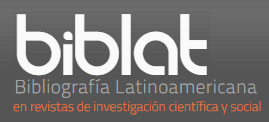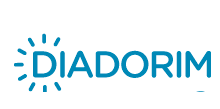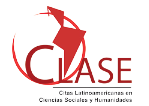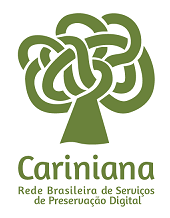Conceptual integration as a basis for the humoristic effect in visual puns
DOI:
https://doi.org/10.5433/1519-5392.2023v23n4p01-22Keywords:
Frame, Conceptual Integration, Humor EffectAbstract
: In this paper we present an analysis of visual puns in the light of analytical tools and operational concepts of Cognitive Linguistics through a qualitative research perspective. Along the way, we used the Theory of Conceptual Integration (FAUCONNIER; TURNER, 2002), the notions of Mental Spaces (FAUCONNIER, 1984) and the Frame Semantics (FILLMORE, 1976; LAKOFF 2004) to support the hypothesis that the effect of humor occurs through a conceptual integration operation. The research takes place along the lines of Casell and Symon (1994), according to which the researcher works according to the dynamic progress of the study. The objectives (to observe the effect of humor on conceptual integrations) are exploratory (GIL, 1991). As for data treatment and object orientation (conceptual integrations of visual puns), we are guided on the bases of qualitative research procedures in Cognitive Linguistics (GONZALEZ-MARQUEZ et al, 2007). The methodological procedure is guided by the foundation in data in an Evidential Paradigm approach (GINZBURG, 1989). Through the results, we believe that the effect of humor in the conceptual integration process arises with the emergence of the conceptual entity substantiated in the blended space at the end of the process.
Downloads
References
BATTISTELLA, M. Águas passadas. São Paulo, 23 jun. 2021a. Instagram. @tudovirabichinho. Disponível em: https://www.instagram.com/p/CQd20-znTzT/?igshid=MzRlODBiNWFlZA==. Acesso em: 2 mar. 2023.
BATTISTELLA, M. O remédio manipulado. São Paulo, 3 out. 2022. Instagram. @tudovirabichinho. Disponível em: https://www.instagram.com/p/CO6VIO1nKTj/?igshid=MzRlODBiNWFlZA==. Acesso em: 2 mar. 2023.
BATTISTELLA, M. O vinho branco. São Paulo, 15 maio 2021b. Instagram. @tudovirabichinho. Disponível em: https://www.instagram.com/p/CjQbJx7LNkM/?igshid=MzRlODBiNWFlZA==. Acesso em: 2 mar. 2023.
BYBEE, J. L. Language usage and cognition. 4. ed. Cambridge: Cambridge University Press, 2012.
CASELL, C.; SYMON, G. Qualitative methods in organizational research: a practical guide. London: Sage, 1994.
CORBIN, J.; STRAUSS, A. Basics of Qualitative Research. Thousand Oaks, CA: Sage, 2015
DUQUE, P. H. Discurso e cognição: uma abordagem baseada em frames. Revista da ANPOLL, Florianópolis, v. 1, n. 39, p. 25-48, 2015.
FAUCONNIER, G. Mappings in thought and language. Cambridge: Cambridge University Press, 1996.
FAUCONNIER, G. Mental spaces. Cambridge: MIT Press, 1984.
FAUCONNIER, G.; SWEETSER, E. Spaces, worlds, and grammar. Chicago: University of Chicago Press, 1995.
FAUCONNIER, G.; TURNER, M. Conceptual integration networks. Cognitive Science, Norwood, v. 22, n. 2, p. 133-187, Apr./June, 1998.
FAUCONNIER, G.; TURNER, M. A mechanism of creativity. Poetics Today, Tel Aviv, v. 20, n. 3, p. 1-34, 1999.
FAUCONNIER, G.; TURNER, M. The way we think: conceptual blending and the mind's hidden complexities. New York: Basic Books, 2002.
FILLMORE, C. Frame semantics and the nature of language. In: HARNARD, S. R.; STEKLIS, H. D.; LANCASTER, Jane. (ed.). Origins and evolution of language and speech. New York: New York Academy of Sciences, 1976.
FILLMORE, C. Frame semantics. In: THE LINGUISTIC SOCIETY OF KOREA (ed.). Linguistics in the morning calm: selected papers from SICOL-1981. Seoul: Hanshin Publishing Co., 1982.
GIBSON, J. J. The ecological approach to visual perception. Hillsdale: Lawrence Erlbaum Associates, 1979.
GIL, A. C. Métodos e técnicas de pesquisa social. São Paulo: Atlas, 1991.
GINZBURG, C. Sinais: raízes de um paradigma indiciário. In: GINZBURG, C. Mitos, emblemas, sinais: morfologia e história. Tradução de Federico Carotti. São Paulo: Companhia das Letras, 1989. p.143-179.
GONZALEZ-MARQUEZ, M.; MITTELBERG, I.; COULSON, S.; SPIVEY, M. J. (ed.). Methods in cognitive linguistics. Amsterdam: John Benjamins, 2007.
LAKOFF, G. Don't think of an elephant! know your values and frame the debate: the essential guide for progressives. White River Junction: Chelsea Green Pub. Co, 2004.
LAKOFF, G.; JOHNSON, M. Metaphors we live by. Chicago: University of Chicago Press, 1980.
SILVA, E. A. da. Modelo ecocognitivo de integração conceptual. 2022. Tese (Doutorado em Estudos da Linguagem) - Universidade Federal do Rio Grande do Norte, Natal, 2022.
SILVERMAN, D. Doing qualitative research: a practical handbook. London: Sage Publications, 2000.
UNIVERSIDADE FEDERAL FLUMINENSE. Museu de memes: o que são memes. Rio de Janeiro: UFF, [2023]. Disponível em: http://www.museudememes.com.br/. Acesso em: 3 mar. 2023.
Downloads
Published
How to Cite
Issue
Section
License
Copyright (c) 2023 Eduardo Alves da Silva

This work is licensed under a Creative Commons Attribution 4.0 International License.
Entretextos adota a Licença Creative Commons Attribution 4.0 International, portanto, os direitos autorais relativos aos artigos publicados são do/s autor/es.
Sob essa licença é possível: Compartilhar - copiar e redistribuir o material em qualquer suporte ou formato. Adaptar - remixar, transformar, e criar a partir do material, atribuindo o devido crédito e prover um link para a licença e indicar se mudanças foram feitas.
























